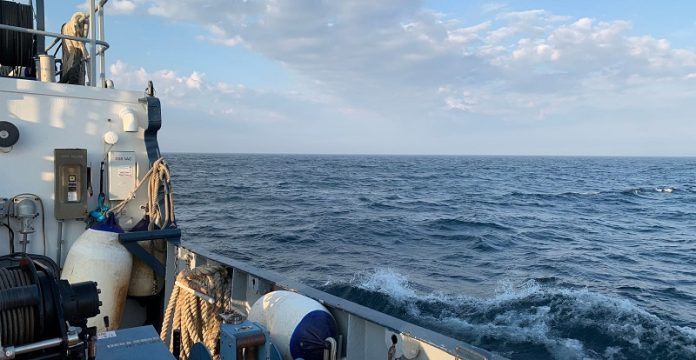
Imagine trying to solve a puzzle about the Earth’s ancient oceans, billions of years ago. That’s exactly what geochemist Alexandra Phillips and her team are doing, with a focus on a special element: sulfur.
This research isn’t just about understanding the past. It’s about piecing together how life and our planet have evolved over time.
Sulfur is crucial for life, but the way it has moved around in the environment, especially in the ancient oceans, is still a mystery.
Phillips, who worked at UC Santa Barbara and University of Minnesota, Duluth, is dedicated to solving this puzzle. Her recent study, published in Limnology and Oceanography, sheds light on a new sulfur cycle discovered in Lake Superior.
Lake Superior is unique because it’s nutrient-poor, making it similar to the oceans that existed 3 billion years ago.
This similarity gives scientists like Phillips a rare opportunity to investigate how sulfur cycled in those ancient times.
It turns out that Lake Superior has much less sulfate (a common form of sulfur in the environment) compared to modern oceans, resembling the ancient oceans before photosynthetic cyanobacteria increased Earth’s oxygen levels.
In the depths of oceans and lakes where there’s little oxygen, certain microbes convert sulfate into hydrogen sulfide (H2S). This process is ancient, with evidence showing it’s been happening for over 3 billion years.
However, before cyanobacteria increased oxygen in the atmosphere, which was around 2.7 to 2.4 billion years ago, it’s been a mystery where microbes got their sulfate from.
Phillips’ research focuses on organic sulfur—sulfur bound to carbon compounds like sulfo-lipids and sulfur amino acids. In modern oceans, organic sulfur is much less abundant than sulfate, but in environments with low sulfate, like Lake Superior or the ancient oceans, organic sulfur becomes much more significant.
The team conducted fieldwork in Lake Superior, taking water and sediment samples from different sites, including oxygen-rich and oxygen-poor areas. They used advanced genetic techniques to identify microbes that reduce sulfate.
Surprisingly, these microbes preferred sulfo-lipids over sulfur amino acids.
This finding is important because it shows that organic sulfur was not only a major player in ancient sulfur cycles but also a significant energy source for microbial life.
What happens to the hydrogen sulfide produced by these microbes? In modern oceans, it can form minerals like pyrite or react with organic molecules.
However, in Lake Superior, the team found a lot of hydrogen sulfide reacting with organic matter. This means that organic sulfur is both a fuel for the sulfur cycle and a final destination for hydrogen sulfide.
This discovery of a new sulfur cycle in Lake Superior is a breakthrough. It suggests that scientists studying aquatic systems should consider organic sulfur as a central element in both nutrient-poor and nutrient-rich environments. This research could change how we view the sulfur cycle in marine and freshwater sediments.
By studying sulfur’s role in early Earth’s chemistry, scientists like Phillips hope to gain insights into how early life forms used sulfur in their metabolism.
This research is more than just about sulfur; it’s about understanding the building blocks of life on our planet and the intricate processes that have shaped Earth’s chemical and biological history.



